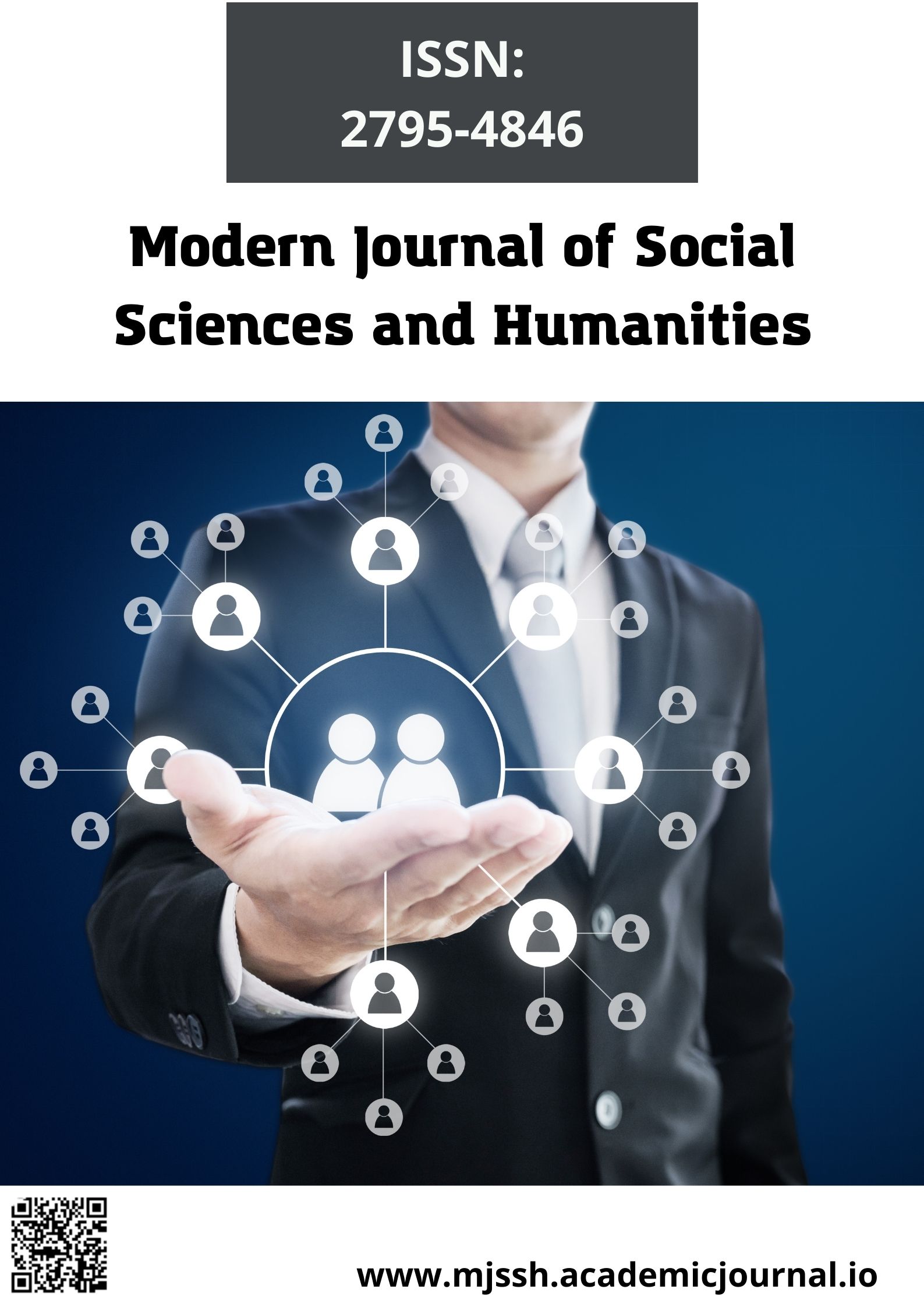EXTRALINGUISTIC ISSUES IN CROSS- CULTURAL COMMUNICATION: BODY LANGUAGE
DOI:
https://doi.org/10.51699/mjssh.vi.322Keywords:
cross-cultural communication, machine learning, second language education, language integrationAbstract
The article is aimed at analyzing cognitive distortions in cross- cultural communication when using automatic translation from Chinese to Russian, which are presented in the Internet space. Hypothesis: cognitive impairment in cross-cultural communication when automatic Chinese- Russian translation due to differences in mentality of Russian and Chinese, differential specificity of cognitive picture of the world at native speakers of languages of different structures, especially the inclusion of the components in the scope of the concept, specifics of the representation of the material with different system of graphics, the mismatches of structure of Russian and Chinese proposals, etc. A special role is played by the peculiarities of the tradition of teaching and communication in Russia and China, as well as the specifics of ethnolinguopsychology. The Chinese mentality has a priority influence on the formation of respect for traditions and following them in the written style of speech. The Chinese mentality finds Parallels with the North Caucasian mentality in using the cognitive experience of its predecessors, in following the traditions of pedagogical practice. Russian Russian and Chinese Russian specialists ' practical skills in cross-cultural communication correspond to the goals, stages, and tasks of training specialists in Russian-Chinese dialogue. The method of analysis is based on an axiological approach and synergetics, including methods of ethnopsycholinguistics, cross-cultural communication, machine learning, methods of teaching languages as foreign languages in an ethno-cultural environment with significant differences in social distance.
References
N. G. Valeeva, E.B. Pavlova, Yu. L. Zakirova M-learning in teaching ESP: case study of ecology students. European Journal of Contemporary Education, 8(3), 920-930 (2019)
I.S. Karabulatova, K. V. Vorontsov Digital linguistic migratology and monitoring of potentially dangerous texts about migration. Migration bridges in Eurasia: new approaches to the formation of migration policy in the interests of sustainable development. Materials of the XI International scientific and practical forum. Edited by S. V. Ryazantsev, M. N. Khramova, 189-204 (2020)
Atabekova Linguistic design of WEB pages (comparative analysis of the language design of English-and Russian-language WEB pages) (2003)
O. V. Dubkova, Lin Mei Cognitive bases of logical violations in the written speech of Chinese Russian specialists. Communication research, 3 (5), 129-136 (2015)
Nai Wan History of Chinese characters in Russian and Chinese. M: Chance, 191 (2017) (in Russ.)
Ma Zhen Myths and legends of China, Moscow: Chance, 143 (2020) (in Russ.)
S. V. Ilyasova, L. P. Amiri The language of media and advertising: the game as a norm and as an anomaly. M.: Flinta: Nauka, 328 (2018) (in Russ.)
Wang Yan Consituation in Russian colloquial speech. Modern Humanities research. 2 (21), 141-148 (2008)
S. Karabulatova (1999). The Russian language in the Russian Chinese border area as a core of the common linguistic base of contactee peoples. Migration processes in the Asia-Pacific region: history, modernity, interaction and regulation practices: proceedings of the international scientific and practical conference, November 10-12, 2015 Vladivostok: DFU, 219-222 (2015) (in Russ.)
M. Dascal Introduction: Some questions about misunderstanding. Journal of pragmatics, (31), 68 (1998)
E. N. Luchinskaya, I. S. Karabulatova, V. I. Tkhorik, V. V. Zelenskaya, S. A. Golubtsov New aspect of intercultural communication discourse modeling in the context of globalization and migration. Opción, 34, 85, 789-800 (2018)
Tao Yuan Teaching Chinese student’s compatibility in translation from Chinese to Russian based on the corpus. Modern Humanities research, 2(63), 83-87 (2015)
D. Nakisbaev, N. Dubinina, I. Karabulatova, A. Levshits, L. Krivoshlykova Actual ethnopsycholinguistic methods of foreign languages teaching in higher education. Man in India, (23), 389-396 (2017)
S. Karabulatova, P. V. Barsukov, I. V. Akhmetov, O. V. Mamatelashvili, F. F. Khizbullin “Network Wars” as a New Type of Devitiaon Processes in the Modern Electronic and Information Society in the Context of Social and Economic Security. MJSS, 6, 6, S.3, 150-159 (2015)
E. R. Aitkulov Linguopragmatics of texts in the Internet space: based on the material of mass media of the Republic of Bashkortostan: abstract of the candidate of philological Sciences dis 10.02.20. Ufa, 23. (2017) (in Russ.)
S. Pozdyaeva, E. Ermakova, G. Shiganova, I. Karabulatova, R. Absalyamova, K. Kotik The Specificity of the Social-Publicistic Discourse of Soft Power in Modern Foreign Politics of China. Man in India, 97 (23), 517-524 (2017) //16
D. Kahneman Think slowly. Solve quickly. M.: AST, 653 (2016) (in Russ.)
L. Levi-Bruhl Supernatural in primitive thinking, Moscow: Pedagogika-Press, 608 (1994) (in Russ.)
S. Karabulatova Modern electronic information discourse as an indicator of ethnopolitical security: interethnic tolerance vs ethnoconflictogenicity in the XXI century. Scientific review. Series 2: Humanities, 2, 3-14 (2016) (in Russ.)
T. B. Balaganova Ethnocultural features of mental disorders in Buryats. Diss. Cand.med.N. Novosibirsk: the ngma, 104 (2006) (in Russ.)
N. N. Zarubina Historical memory as a source of knowledge about the civilizational specifics of Russia. Social Sciences and modernity. 2, 52-63 (2017) (in Russ.) //21
Daria A little humor. Chinese signs a La Rus, from 16.07.2019. URL: https://zen.yandex.ru/media/id/5cf6688f2d133400afd9a0b5/nemnogo-iumora- kitaiskie-vyveski-alia-rus-5d2dc6d746f4ff00ad7c495a?utm_source=serp (in Russ.)
. V. Kolomenskaya Russian advertising: on the issue of language specifics (based on Russian signage in Heihe, China). Word: folklore and dialectological almanac, 8, 31- 37 (2010) (in Russ.)
E. A. Oglezova The Russian Chinese pidgin: sociolinguistic experience of the description. Blagoveshchensk: Amur state University, 264 (2007) (in Russ.) //24
Lou Tintin Political linguistics in China: theory and main directions. Political linguistics, 5 (59), 46-55 (2016)






